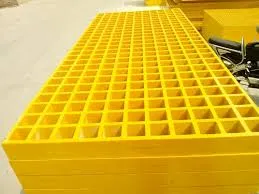loading...
- No. 9, Xingyuan South Street, Dongwaihuan Road, Zaoqiang County, Hengshui, Hebei, China
- admin@zjcomposites.com
- +86 15097380338
- Welcome to visit our website!
frp louver
Understanding FRP Louvers A Comprehensive Overview
FRP (Fiber Reinforced Polymer) louvers have gained significant traction in various industries due to their exceptional properties and versatility. As a crucial component in building design and ventilation systems, these louvers serve both functional and aesthetic purposes in modern architecture.
What Are FRP Louvers?
FRP louvers are specially designed ventilation slats made from a composite material that combines a polymer matrix reinforced with fibers, typically glass or carbon. This innovative material offers a range of benefits including lightweight, high strength, corrosion resistance, and durability, making FRP louvers suitable for various environments, from industrial facilities to residential buildings.
Key Benefits of FRP Louvers
1. Corrosion Resistance One of the most significant advantages of FRP louvers is their resistance to corrosion. Unlike traditional materials like aluminum or steel, which can degrade over time when exposed to moisture and chemicals, FRP louvers maintain their integrity and performance even in harsh environments. This makes them ideal for applications in coastal areas or industrial settings where exposure to corrosive substances is common.
2. Lightweight and Easy to Install FRP is much lighter than metal alternatives, which not only reduces the structural load on buildings but also facilitates easier handling and installation. This characteristic can lead to lower labor costs and faster project completion times.
3. Low Maintenance FRP louvers require minimal maintenance compared to other materials. Their resistance to rust, rot, and decay ensures that they remain functional and aesthetically pleasing over a longer period, reducing the need for frequent repairs or replacements.
frp louver

4. Energy Efficiency By promoting optimal airflow and temperature regulation, FRP louvers contribute to energy-efficient building designs. They allow natural ventilation, reducing the reliance on mechanical cooling systems and thereby lowering energy consumption.
5. Design Flexibility Available in a variety of colors, shapes, and sizes, FRP louvers offer architects and designers the flexibility to create visually striking facades while ensuring functionality. This adaptability makes them a favored choice in both commercial and residential projects.
Applications of FRP Louvers
FRP louvers are widely used in various sectors including
- Industrial Facilities They are utilized in manufacturing plants, power plants, and waste treatment facilities where ventilation and environmental control are critical. - Commercial Buildings Many offices and shopping complexes employ FRP louvers for effective airflow management and to enhance architectural aesthetics. - Residential Projects Homebuilders increasingly incorporate FRP louvers into designs for energy efficiency and appeal.
Conclusion
In conclusion, FRP louvers represent a fusion of functionality and modern design, delivering numerous advantages for builders, architects, and end-users alike. With their impressive strength-to-weight ratio, corrosion resistance, and versatility, they are set to become a standard in the future of building ventilation solutions. As industries continue to evolve, the demand for advanced materials like FRP will undoubtedly increase, paving the way for innovative designs and sustainable practices in construction. Adopting FRP louvers not only ensures performance but also aligns with modern environmental standards, making them an invaluable asset in today’s architectural landscape.
-
The Rise of FRP Profiles: Strong, Lightweight, and Built to LastNewsJul.14,2025
-
SMC Panel Tanks: A Modern Water Storage Solution for All EnvironmentsNewsJul.14,2025
-
GRP Grating: A Modern Solution for Safe and Durable Access SystemsNewsJul.14,2025
-
Galvanized Steel Water Tanks: Durable, Reliable, and Ready for UseNewsJul.14,2025
-
FRP Mini Mesh Grating: The Safer, Smarter Flooring SolutionNewsJul.14,2025
-
Exploring FRP Vessels: Durable Solutions for Modern Fluid HandlingNewsJul.14,2025
-
GRP Structures: The Future of Lightweight, High-Performance EngineeringNewsJun.20,2025
